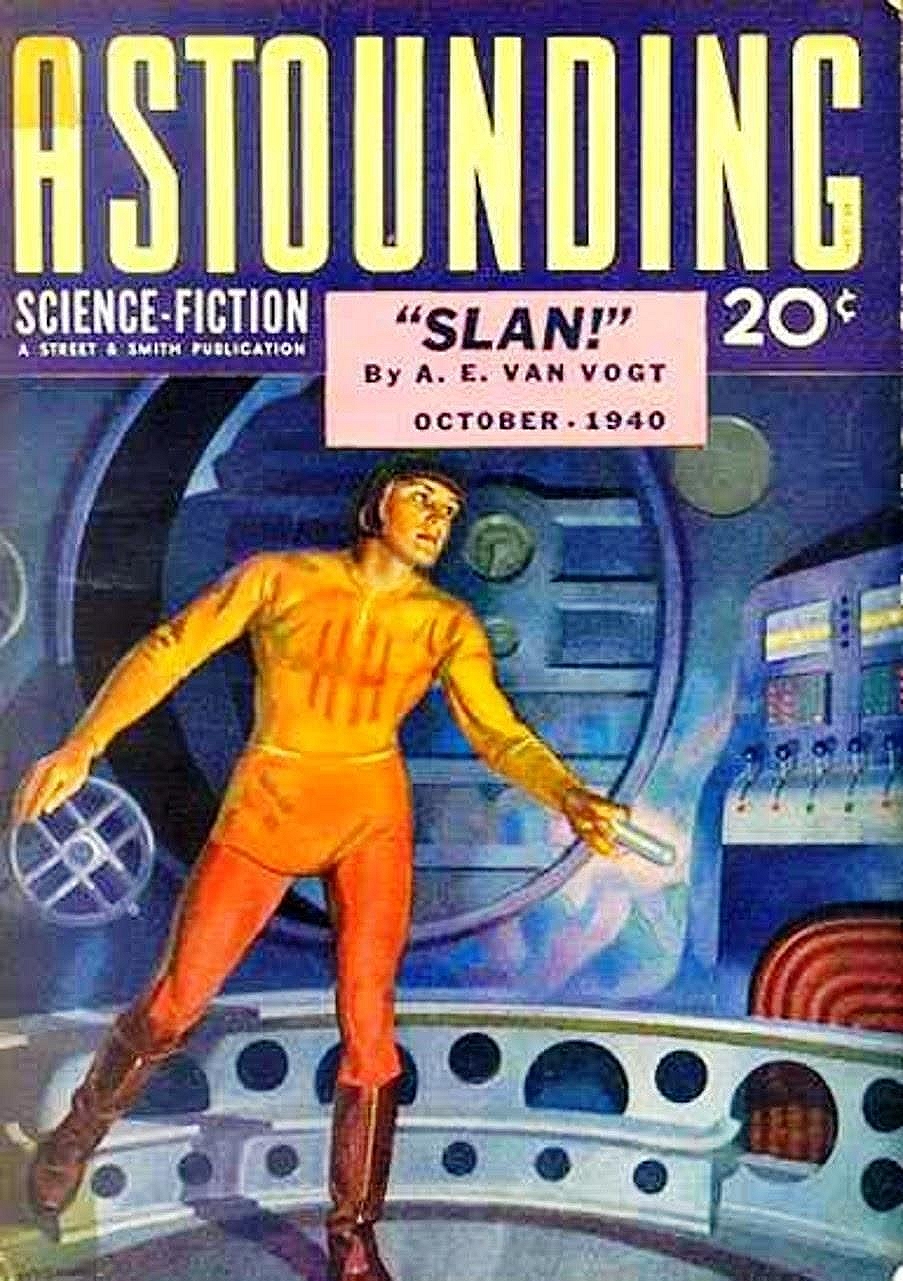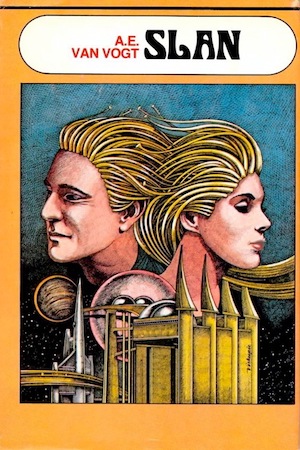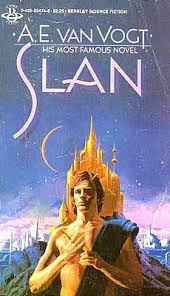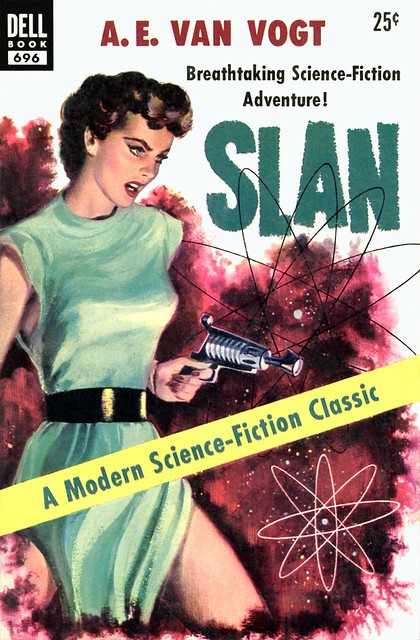|
And so we come to the novel and A. E. van Vogt's reception. Now, while the author had some early success, he was seriously criticised by an SF giant of the time, Damon Knight, who wrote an 1945 essay reprinted in In Search of Wonder (1967) 'Cosmic Jerrybuilder: A. E. van Vogt' that severely criticised van Vogt's abilities. He said:
In general van Vogt seems to me to fail consistently as a writer in these elementary ways: 1. His plots do not bear examination. 2. His choice of words and his sentence-structure are fumbling and insensitive. 3. He is unable either to visualize a scene or to make a character seem real.
Knight's damming comments apparently hurt van Vogt's standing and career. However in 1974 Philip K. Dick cited van Vogt as one of the writers that influenced him most. Further, Dick condemned Knight's criticisms.
van Vogt had other supporters such as editor and writer John W. Campbell, Harlan Ellison and editor David Hartwell. Certainly van Vogt had the last laugh with a number of accolades including in 1996 belatedly becoming an SFWA Grand Master (belatedly because the SFWA's founder was Damon Knight and, it is said, it was felt that Knight should be made a grandmaster first with some time passing before Vogt received the same honour. However, they almost left it too late as he showed the signs of Alzheimer's. He died just three and a half years later in 2000AD.)
Having said all that, my own personal feeling is that, whether or not you like van Vogt's writing, it is not a binary decision. Slan exhibits much SFnal sense-of-wonder and has a lot going on. On the other hand I found the writing in Slan somewhat clunky, and the plot's unfolding uneven to the point where I wished that someone would give it a good copy edit, though a re-write would be more in order. For example, at the bottom of Chapter 9's second page our protagonist is contemplating a possible plan of action and then the paragraph abruptly ends with "…". The next paragraph begins with a different location and with time passed and the aforesaid plan completed, so giving the reader a hang-on-what-happened-there moment! That ellipsis does a lot of heavy lifting. And then there is the treatment of women in the story, and that is they are treated rather badly.
Slan, though, was van Vogt's first novel based on a series of stories he wrote in his 20s and so it was something of a debut outing even if he had written short stories before. Readers, therefore, might want to come to it in a somewhat forgiving way, though I doubt if the manuscript crossed an editor's desk today it would get accepted by any half-decent SF/F imprint.
Certainly, van Vogt wrote some influential novels. Perhaps best known is The Voyage of the Space Beagle (1950) and, earlier, the short stories 'Destroyer' and 'Discord in Scarlet' (both 1939) all of which helped inspire the film Alien (though that film has other roots too). Alien must have been sufficiently similar to aspects of these stories as 20 Century Fox paid van Vogt an out of court settlement.
Van Vogt went on, in a near four-decade long career, to give us over 30 novels, the last being in 1984, and a dozen short story collections. His work in the 1950s was probably his best. Certainly, no discussion of N. American Golden Age SF would be complete without reference to van Vogt and some of his works.
Slan itself had an impact on N. American book SF fandom of the 1940's to '60s as fans (considering themselves more intelligent than average and feeling persecuted – SF was a ghetto genre until the early 2000s) identified with the idea of slans with the saying 'Fans are slans'. Additionally, houses where a few N. American SF fans lived together became known as 'slan shacks'. Meanwhile, over here in Brit Cit, I recall the SF conventions of the late 1970s and older fans talking of van Vogt: his reputation was international.
Now long out of print, the novel Slan, while not a major classic of SF, did have a sufficient impact, and van Vogt himself garnering a respectably sized readership, can – as I said at this critique's beginning – be considered as something of a minor classic. If are an SF book collector, especially if you are into the history of western SF, and you see it out in the wild, in some second-hand bookshop, then grab it; there aren't many left.
Jonathan Cowie
[Up: Fiction Reviews Index | SF Author: Website Links | Home Page: Concatenation]
[One Page Futures Short Stories | Recent Site Additions | Most Recent Seasonal Science Fiction News]
[Updated: 25.4.15 | Contact | Copyright | Privacy]
|



